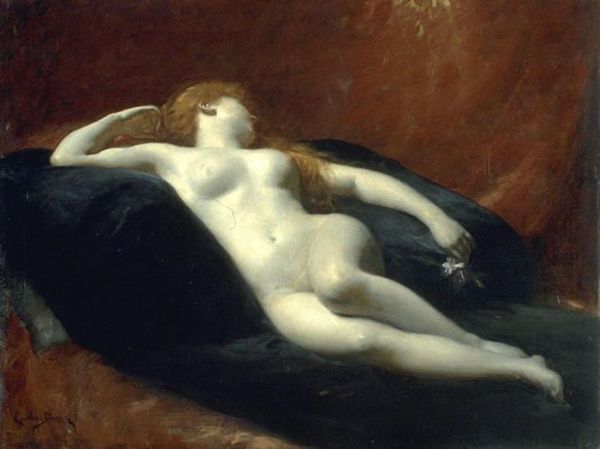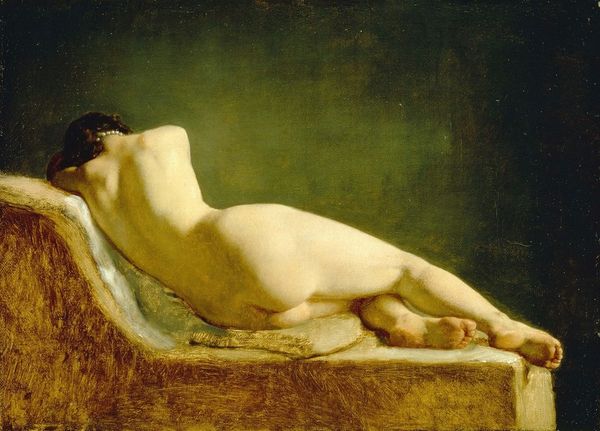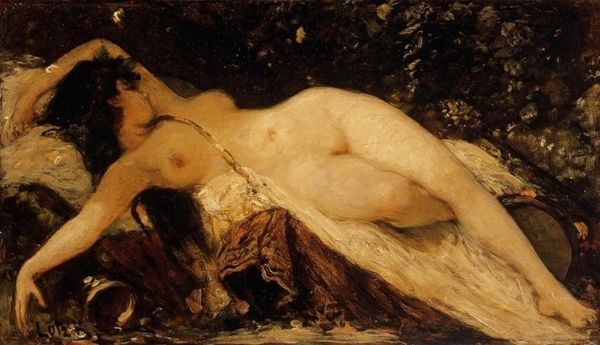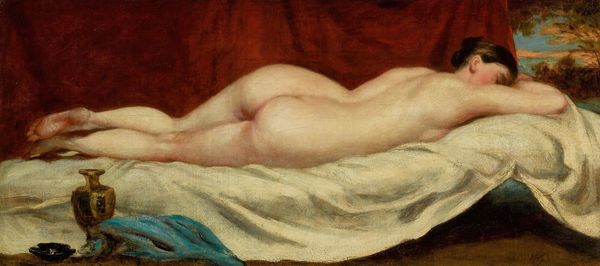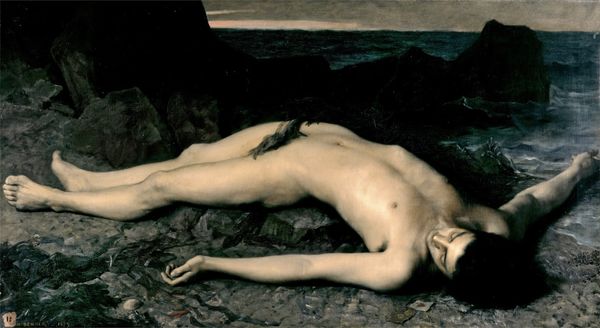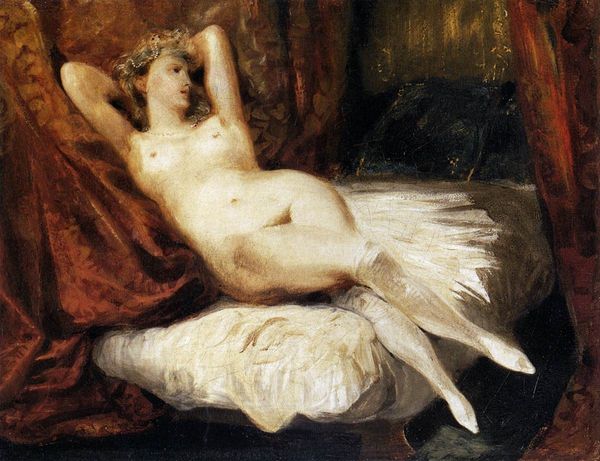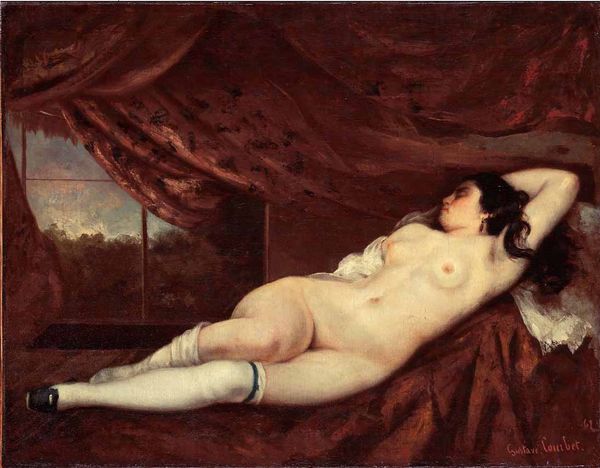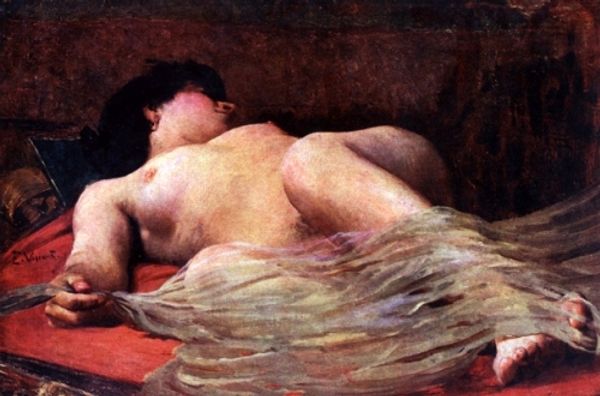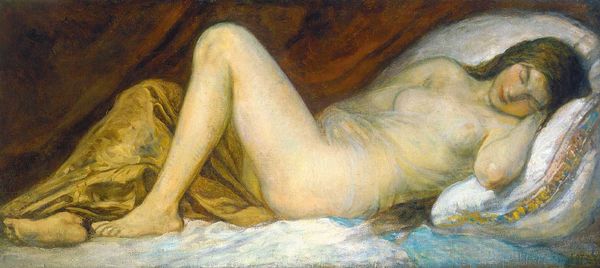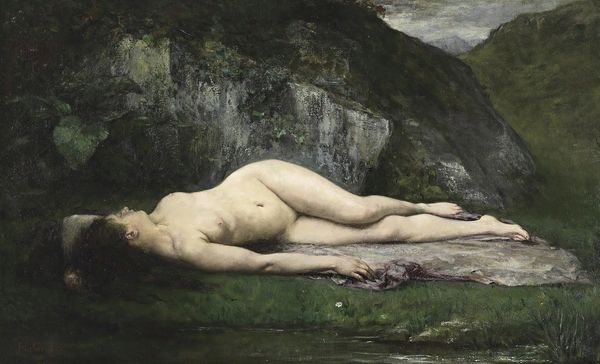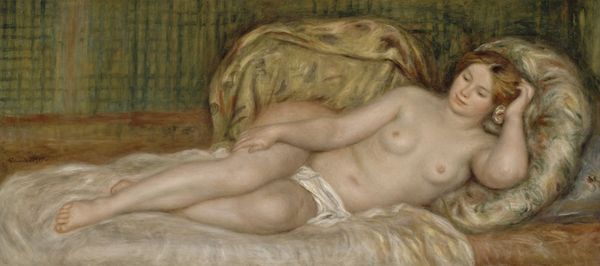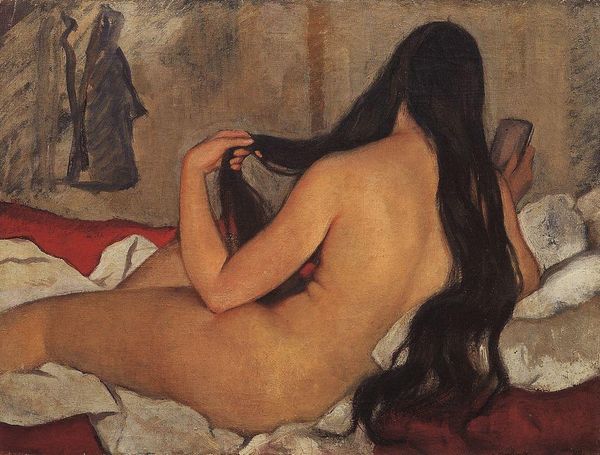
Dimensions: 101.6 x 55.9 cm
Copyright: Public domain
Curator: Here we have William Merritt Chase's "A Study in Curves," painted in 1890. Editor: It feels so opulent, and somehow vulnerable. The rich browns and reds highlight the pale skin, and she seems almost lost in the softness of the bed. Curator: Chase was a master of materiality. Look at how the oil paint renders the texture of the velvet pillow against the smooth flesh. There's a real contrast happening. Consider also the kind of labor involved; creating this sort of canvas, the pigments themselves. The subject of female nudes itself was fraught with a very gendered industry around painting and the use of female bodies. Editor: Absolutely. It's worth noting how these kinds of nudes, showcased often in private collections before museums, speak volumes about the power structures of the late 19th century. A work like this helped to define who had the means and the perceived right to look—and to possess such imagery. It perpetuates the objectification of women within the art world's ecosystem. Curator: You can see Chase grappling with academic traditions and realism in terms of his practice here too. The production itself points to a complicated engagement with ideas of beauty and the societal norms. The texture in this work— the brushstrokes and layers, contribute so significantly to the overall meaning. Think of how audiences consumed this art as commodities. Editor: Indeed. The image gains new dimensions once we contextualize it within the period’s rigid social structures. Examining who had access to this piece originally reveals its connection to wealth and power. Even its display, presumably in a private space, dictates its impact. It's hard to ignore the way this scene reinforces class and gender expectations within its initial viewership. It wasn't just aesthetic appreciation, it was social assertion through art ownership. Curator: The social life of pigments and cloth alongside the objectification is all part of a larger cycle here. The reception hinges, for me, on this kind of context of production. Editor: Well, considering its journey to where it hangs now adds yet another layer. Every viewing shapes the work again. Curator: Agreed, this has been so interesting. Editor: Yes, certainly has.
Comments
No comments
Be the first to comment and join the conversation on the ultimate creative platform.
